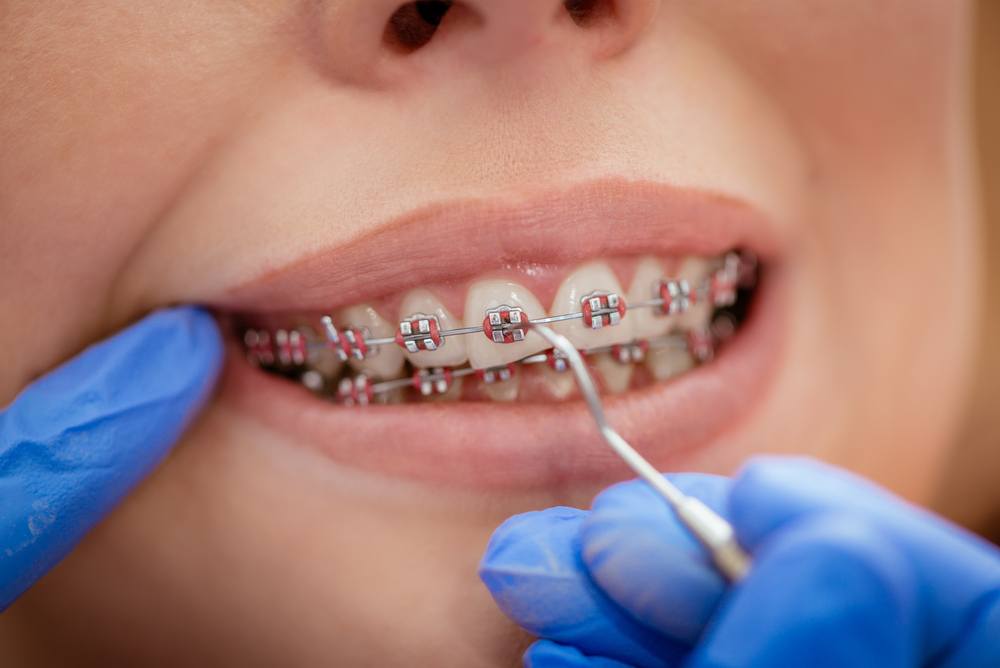Top Tips for Choosing the most effective Cumming Orthodontist for Braces and Aligners
Top Tips for Choosing the most effective Cumming Orthodontist for Braces and Aligners
Blog Article
Comprehensive Overview to Orthodontics Procedures for Fixing Dental Misalignments
Comprehending the intricacies of each treatment, including their mechanisms, benefits, and possible disadvantages, is critical in making notified decisions regarding one's orthodontic therapy. As we navigate with the comprehensive guide to orthodontic treatments for correcting oral imbalances, the intricate information of each approach will unfold, losing light on the path toward a functional and harmonious oral placement.
Orthodontic Procedures Summary

In addition to clear aligners and standard dental braces, orthodontists might additionally advise various other treatments like headwear, palatal expanders, or retainers to resolve details placement concerns (cumming aligners). These treatments are customized to every individual's special requirements and may involve a combination of treatments to attain the wanted outcomes. Regular adjustments and surveillance are crucial components of orthodontic therapy to make sure development is on track and to make any essential alterations along the means. By going through orthodontic procedures, patients can not just accomplish a straighter smile but additionally enhance their general dental wellness and function.
Traditional Dental Braces: How They Work
When taking into consideration orthodontic therapies for dental misalignments, conventional dental braces stand apart as a time-tested method for dealing with teeth positioning. Typical braces include braces, cords, and bands that collaborate to apply constant stress on the teeth, progressively relocating them right into the desired alignment. The brackets are affixed to the teeth utilizing a special adhesive, and the cables are threaded with the brackets. By changing the tension of the cables, orthodontists can manage the direction and force related to each tooth, assisting them right into correct placement with time.
As stress is applied to the teeth through the dental braces, the bone bordering the teeth is reshaped to support the new tooth placements. Individuals will require routine adjustments at the orthodontist's workplace to guarantee the braces proceed to apply the proper pressure for reliable teeth motion.
Invisible Aligners: Pros and Disadvantages
These clear, custom-made trays are essentially unseen when worn, making them an appealing option for individuals looking for an extra cosmetically pleasing orthodontic treatment. Patients can remove the aligners before consuming or cleaning their teeth, reducing the risk of food getting stuck in the appliance and simplifying the cleaning process.

Surgical Orthodontic Options
Surgical treatments in orthodontics present viable choices for dealing with intricate dental imbalances that might not be effectively settled with conventional orthodontic therapies. While traditional dental braces and invisible aligners can fix several orthodontic problems, specific cases need medical intervention to attain optimal outcomes. check over here Surgical orthodontic options are commonly suggested for extreme malocclusions, significant jaw disparities, and cases where the underlying bone framework requires modification to accomplish correct positioning.
One go to this website typical medical orthodontic procedure is orthognathic surgical procedure, which involves rearranging the jaws to fix practical concerns such as trouble chewing or speaking. This surgical procedure is frequently done in cooperation with an orthodontist that helps align the teeth before and after the treatment. Surgical orthodontics might additionally entail treatments to expose impacted teeth, remove excess gum tissue, or reshape the jawbone to produce a much more unified face account.
Prior to considering surgical orthodontic options, patients undergo an extensive examination to figure out the need and possible advantages of such interventions. cumming aligners. While surgery might seem daunting, it can considerably enhance both the function and looks of the smile in instances where traditional orthodontic treatments fall short
Retainers and Post-Treatment Care

Post-treatment care involves adhering to the orthodontist's guidelines carefully. This may include correct dental hygiene techniques, participating in follow-up visits, and using the retainers as prescribed. Failing to adhere to post-treatment care guidelines can lead to relapse, his comment is here where the teeth progressively return towards their original placements. Constant retainer wear, good dental hygiene, and regular oral check-ups are essential for keeping the results attained through orthodontic surgery and making certain the long-lasting security of the remedied dental positioning.
Verdict
In final thought, orthodontic treatments offer different alternatives for fixing oral imbalances. Surgical orthodontic alternatives are available for a lot more extreme imbalances. On the whole, orthodontic treatments can properly boost oral wellness and aesthetic appearance.
As we browse through the comprehensive overview to orthodontic procedures for fixing dental misalignments, the intricate information of each approach will certainly unravel, dropping light on the path toward a unified and useful dental alignment. - cumming braces
One of the most usual orthodontic treatments is the use of dental braces, which are composed of metal brackets and cords that use gentle pressure to progressively move teeth into the desired placement.When taking into consideration orthodontic treatments for dental imbalances, standard braces stand out as a time-tested approach for dealing with teeth placing. Additionally, invisible aligners might not be appropriate for complex orthodontic concerns that need more substantial teeth motion, as they are generally advised for light to moderate instances. Retainers are tailor-made orthodontic devices made to hold teeth in their remedied positions after the conclusion of orthodontic treatment.
Report this page